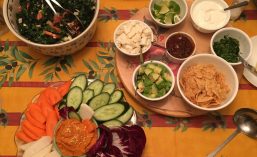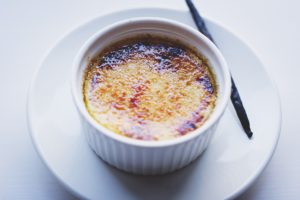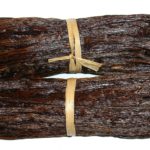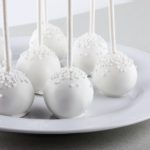For You More Creative Types, Make Your Own Vanilla2.0
 Yup – that’s right. Well, I goofed this week – I had intended to let had my guest post from Anna go live first, but some of you might have gotten a sneak preview of this one when the “now” feature got clicked. In either case, you can read Anna’s post “Know Your Extracts: Sniffing out the Best Vanilla for Your Baking” once it goes live late this week, then perhaps you will be inspired to go on to the next step and try making your own version of Vanilla2.0
Yup – that’s right. Well, I goofed this week – I had intended to let had my guest post from Anna go live first, but some of you might have gotten a sneak preview of this one when the “now” feature got clicked. In either case, you can read Anna’s post “Know Your Extracts: Sniffing out the Best Vanilla for Your Baking” once it goes live late this week, then perhaps you will be inspired to go on to the next step and try making your own version of Vanilla2.0
Vanilla is one of those elements in baking that you either love or don’t. Somewhat like using good quality Tumeric is in cooking. I got started on this road myself after watching some of the baking shows on TV that were using Vanilla Bean Paste which I hadn’t seen before. After visiting the blog Superfoodly.com which had posted a December piece “The Scandal Between Vanilla Bean Paste vs. Vanilla Extract” .and served as a good place to start (I didn’t necessarily agree with everything – they shared some great content on the post). I started following links, speaking with other folks who do more baking and came across the whole movement of making your own Vanilla Extract.
Several great recipes are available online for making your own home inspired version of vanilla extract. But to make a good quality one, you need time and the right beans. It isn’t something you want to rush. In fact, if you get them started now. They will make great Holiday gifts this season.
Choosing which beans you want to use also takes some research. Areas to take note of include the grade of bean, the type of bean, the age of them and the source ( they can be expensive) and what liquid you intend to use to extract the flavor (a variety of options exist based on flavor or non-alcohol needs).
My next plan
I will be starting a batch in April in fact with ” Tahitian Grade B beans but I also like the Madagascar Bourbon Vanilla Beans (Vanilla Planifolia so may make some comparison batches. A few of the online sites that offer recipes for making your own, including purchasing recommendations include:
- Banilla.com has a great blog post on it as well here titled Homemade Vanilla Extract
- The Daring Gourmet
- Vanilla Saffron Exports (I tend to favor this as its local to me)
Once you get ready to start making your own here are a few things you will need to have on hand.
If you are like me and tend to be more creative, plan early:
- You will need the beans; that means deciding on the grade of the bean and the ration of beans to the liquid mix; I saw lots of variations on this from 1 whole vanilla bean for every 2 liquid ounces of alcohol. I think to keep it simple I may start with a 1:1 ratio as in 1 bean to each ounce of liquid (then depending on the jar size might top off)
- Extracting liquid; lots of options for this the most common include Bourbon, Rum, Brandy, and Vodka. The key factor is the liquid has to be greater than 70% proof
- Bottles/Jars; You will need to decide if you are making a large batch then decant into smaller ones or just go right to the smaller ones. I think I will be hitting the swap and flea markets for vintage and unusual decanters to use as gifts. One common theme I heard was to avoid clear jars (or keep stored in a dark place) and my preference to stay away from plastics. As a back up I found 4 ounce Amber jars on Amazon that I may order to have on hand for “extra” last minute needs.
- Labels: start thinking what size you will need and how you plan to label them if you are gifting them
Note: this post has some affiliate links to Amazon



